
Terry Pratchett described the traditional view of the creation of the Universe: “In the beginning was nothing, which exploded”. Modern view of cosmology implies that the expanding universe originated in the Big Bang, and it is well supported by evidence in the form of background radiation and offset the distant light towards the red end of the spectrum: the universe is expanding constantly.
And yet not all were able to convince. For many years proposed a variety of alternatives and different views. Some interesting assumptions remain, alas, untestable with the use of our modern technology. Others are flights of fancy, a rebellion against the incomprehensibility of the Universe, which seems to defy human notions of common sense.
The theory of a stationary Universe
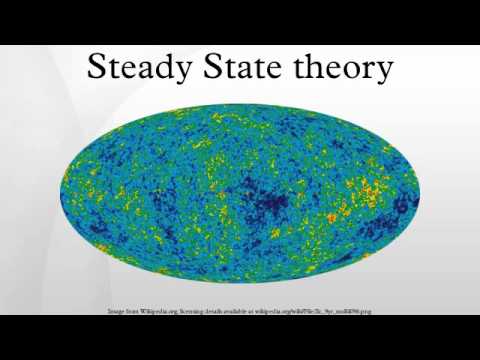
According to a recently restored manuscript of albert Einstein, the great scientist paid tribute to the British astrophysics Fred Hoyle, for the theory that space can expand indefinitely, while maintaining uniform density if there’ll always be new matter in the process of spontaneous generation. For many decades, many considered the ideas of Hoyle nonsense, but a recently discovered document shows that Einstein at least gave serious consideration to his theory.
Steady state theory was proposed in 1948 by Hermann Bondi, Thomas gold and Fred Hoyle. She came from the perfect cosmological principle, which States that the universe looks essentially the same at each point at any time (in macroscopic sense). From a philosophical point of view it is attractive, since then the universe has no beginning and no end. The theory was popular in the 50-60-ies. Faced with the evidence that the universe was expanding, its supporters suggested that the universe constantly come up with new matter, in a constant but moderate pace — a few atoms per cubic kilometer per year.
Observations of quasars in the distant (and old, from our point of view) galaxies in our stellar vicinity does not exist, cooled the enthusiasm of theorists, and it was finally debunked when scientists discovered the cosmic background radiation. However, although the theory of Hoyle did not bring him laurels, he conducted a series of studies that showed how the universe appeared the atoms heavier than helium. (They appeared in the lifecycle of the first stars at high temperatures and pressures). Ironically, he was also one of the founders of the term “big Bang”.
Tired light

Edwin Hubble noticed that wavelengths of light from distant galaxies shifted towards the red end of the spectrum, when compared with the light emitted by stellar bodies nearby, it talks about the loss of the photon energy. “Red shift” is explained in the context of the expansion after the Big Bang as a function of the Doppler effect. Supporters of the stationary universe models it is assumed that photons of light lose energy gradually as it moves through space, turning toward the long wavelengths and less energy in the red end of the spectrum. This theory was first proposed by Fritz Zwicky in 1929.
With tired light bind a number of problems. First, there is no way to change photon energy without changing its momentum, which should lead to the blur effect, which we do not observe. Secondly, it does not explain the observed patterns of light emission of the supernova, which correlate very well with the model of the expanding universe and special relativity. Finally, most models are based on tired light pressureuse the universe, but this leads to the spectrum of background radiation that does not correspond to our observations. In numerical terms, if the tired light hypothesis was correct, all the observed cosmic background radiation would have to come from sources that are closer to us than the Andromeda galaxy (our nearest galaxy), but everything behind it would be invisible to us.
Eternal inflation
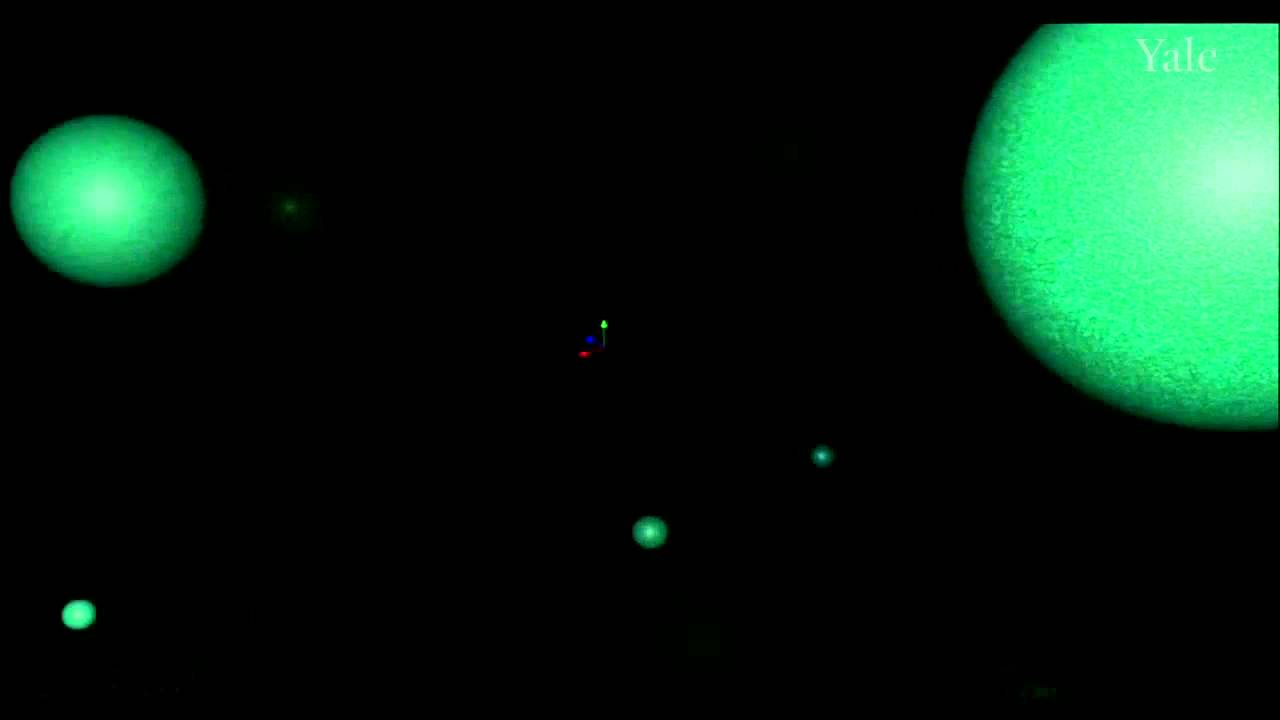
Most current models of the early Universe postulate a short period of exponential growth (known as inflation) caused by the vacuum energy, in which adjacent particles were rapidly separated by vast regions of space. After inflation, the vacuum energy has collapsed to a hot plasma in a stock that formed atoms, molecules and so on. In the theory of eternal inflation this inflation process never ended. Instead, bubbles of space would stop the bloat and would have entered a low energy condition to after to expand in inflationary space. These bubbles were similar to the bubbles of steam in boiling the pot of water, only this time the pot has increased steadily.
According to this theory our universe is one of multiple bubbles of the universe, characterized by persistent inflation. One of the aspects of this theory that could be tested, is the assumption that two universes that are close enough to meet, will cause disturbances in space-time of each universe. The best support for this theory would be the discovery of evidence of such violation on the relic background radiation.
The first inflationary model was proposed by Soviet scientist Alexei starobinski, but in the West it has become known thanks to physics, Alan Guth, suggested that the early universe would SuperCool and allow exponential growth to begin before the Big Bang. Andrei Linde took these theories and developed them on the basis of the theory of “eternal chaotic expansion”, according to which instead of having the Big Bang, when the necessary potential energy, expansion can begin at any point scalar space and occur constantly throughout multivalency.
Says Linda: “Is the universe with one law of physics, eternal chaotic inflation suggests samovosproizvoditsya and eternally existing multiverse where all things are possible”.
Mirage four-dimensional black hole
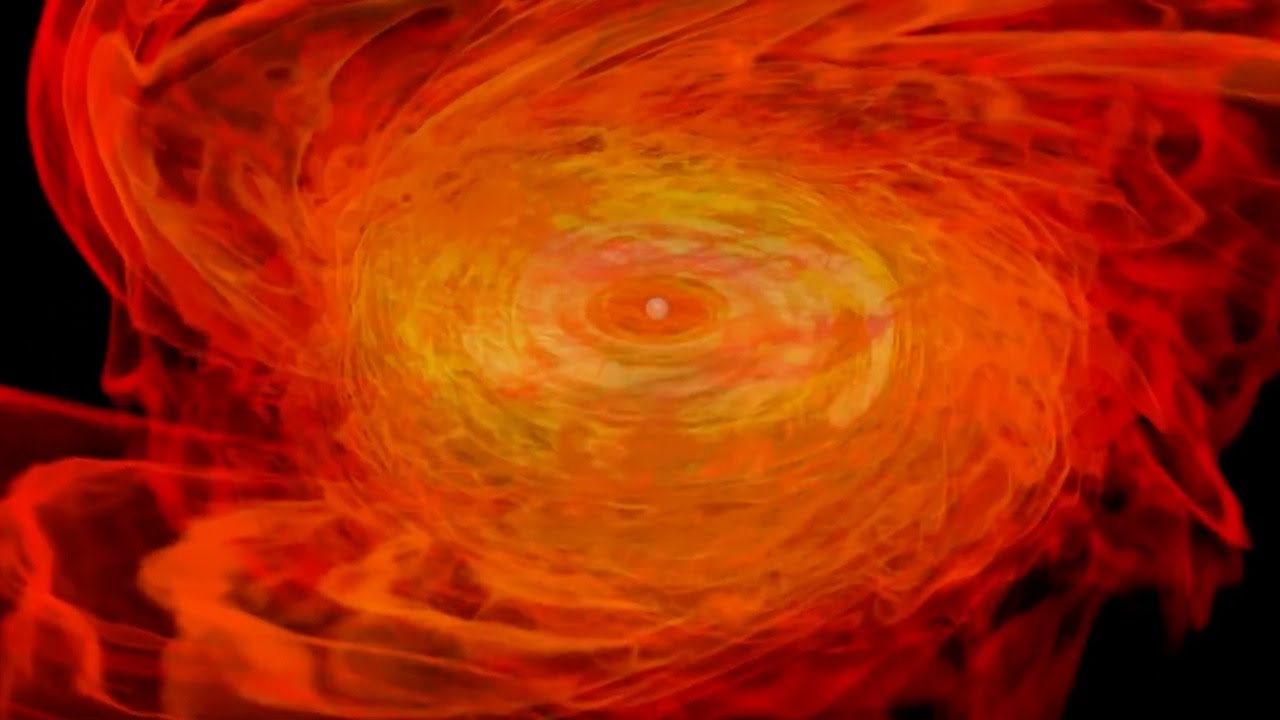
The standard Big Bang model claims that the universe exploded from an infinitely dense singularity, but it does not facilitate the task of explaining its nearly uniform temperature, given the relatively short time (by the standards of outer space) that has passed since this brutal event. Some believe that this could explain an unknown form of energy, which lead to the conclusion that the universe expanded faster than the speed of light. A group of physicists from the Institute for theoretical physics Perimeter suggested that the universe may be essentially three-dimensional Mirage that is created on the event horizon of a four-dimensional star collapsing into a black hole.
Niayesh Afshordi and his colleagues studied the proposal in 2000 by the team of the Ludwig Maximilian University in Munich, on the topic of what our universe may be only one membrane that exists in a “bulk universe” with four dimensions. They decided that if this volume also contains a four-dimensional universe, the stars, they can behave like their three-dimensional counterparts in our universe — exploding in a supernova and collapser in black holes.
Three-dimensional black hole is surrounded by a spherical surface — the event horizon. While the surface of the three-dimensional event horizon of a black hole two-dimensional, the shape of the event horizon of four-dimensional black hole is three dimensional — the hypersphere. When afshordi the team modeled the death of a four-dimensional star, she found that the erupted material formed a three-dimensional brane (membrane) around the event horizon and slowly expanded. The team suggested that our universe could be just a Mirage formed from the wreckage of the outer layers of a four-dimensional star collapsing.
Since four-dimensional bulk universe may be much older or even infinitely old, that explains the uniform temperature observed in our Universe, although some recent data suggest that there may be deviation due to which the traditional model fits better.
Mirror Universe
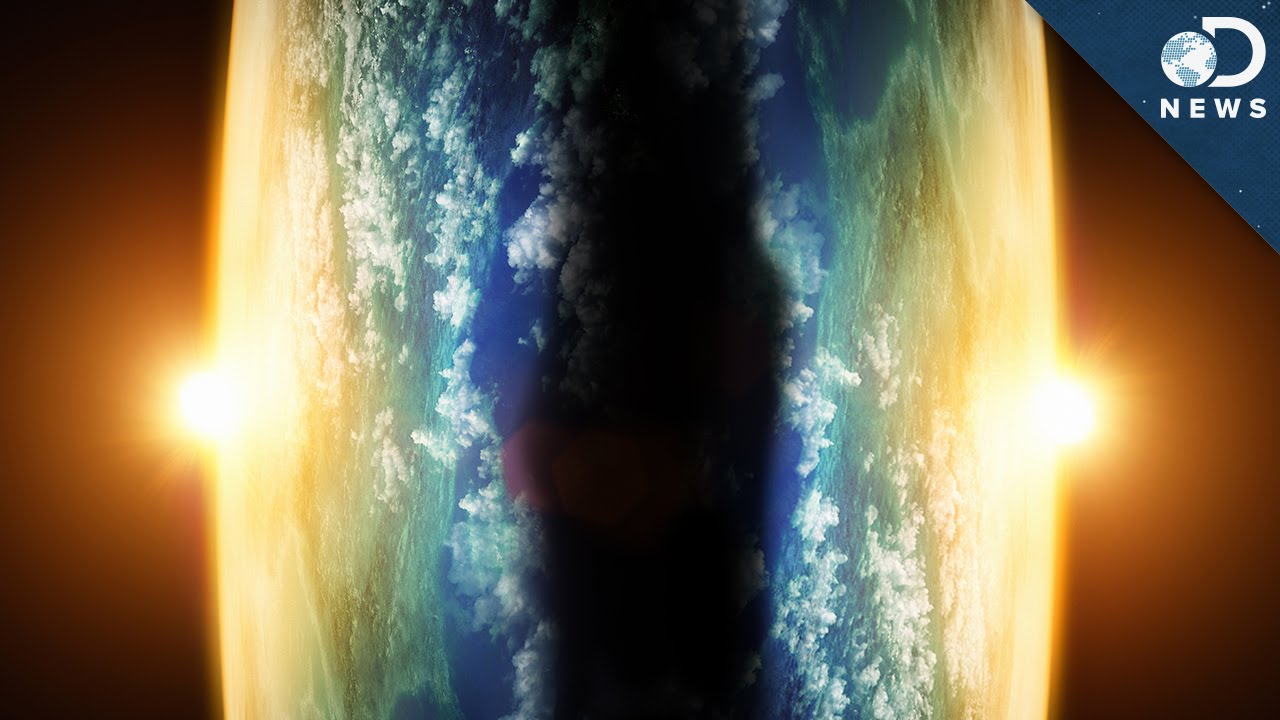
One of the intricate problems of physics is that almost all the accepted model, including gravity, electrodynamics and relativity, work equally well in describing the Universe, regardless of whether time goes forward or backward. In the real world we know that time moves only in one direction, and the standard explanation for this is that our perception of time is but the product of entropy, in which order dissolves into disorder. The problem with this theory in that it implies that our universe began with a highly-ordered state and a low entropy. Many scientists disagree with the notion nizkorentabelnoj the early universe, which fixes the direction of time.
Julian Barbour from the University of Oxford, Tim koslowski of the University of new Brunswick and Flavio Mercati of the Institute for theoretical physics Perimeter has developed a theory according to which gravitation has led to the fact that the time began to flow forward. They studied a computer simulation of particles in 1000 points, which interact under the influence of Newtonian gravity. It was found that regardless of their size or the size of the particles to eventually form a state of low complexity with minimum size and maximum density. Then this system of particles is expanded in both directions, creating two symmetrical and opposite “arrows of time”, and with it more orderly and complex patterns on both sides.
This suggests that the Big Bang led to the creation of not one but two universes in which time flows in the opposite direction from the other side. According to Barbour:
“This situation with two future will be to demonstrate a unified chaotic past in both directions, meaning that there will be essentially two universes, on each side of the Central state. If they are sophisticated enough, both sides will support observers who would be able to perceive the flow of time in reverse. Any rational being would define their arrow of time as separation from the Central state. They will think that we are now living in their distant past.”
Conformal cyclic cosmology
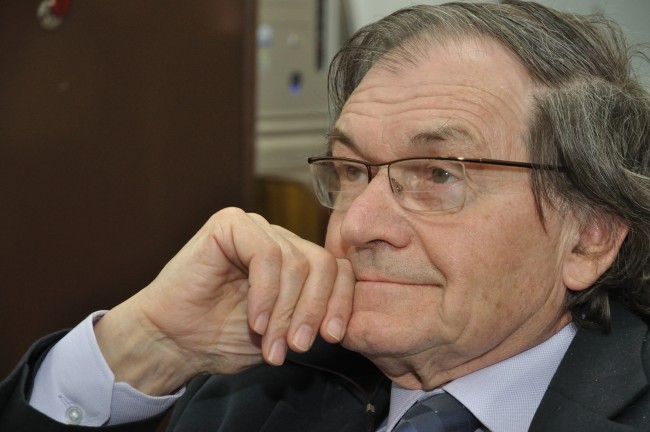
Sir Roger Penrose, a physicist at Oxford University, believes that the Big Bang was not the beginning of the Universe, but a transition as it passes through cycles of expansion and contraction. Penrose suggested that the geometry of space changes with time and is becoming more complicated, as described by the mathematical concept of the curvature tensor of Weyl, which starts at zero and increases with time. He believes that black holes are, reducing the entropy of the Universe, and when the latter reaches the end of expansion, black holes absorb matter and energy and, eventually, each other. As the collapse of matter into black holes, it disappears in the process of Hawking radiation, the space is homogeneous and filled with useless energy.
This leads to the notion of conformal invariance, the symmetry of geometries with different scale, but one form. When the universe will no longer be able to meet initial conditions, Penrose believes that the conformal mapping will cause the geometry of space a flattening, and degraded particles will return to a state of zero entropy. The universe collapses in itself, ready to break out a new Big Bang. It follows that the universe is characterized by a recurring process of expansion and contraction, which Penrose is divided into periods called eons.
Panros and his partner, Vahagn (Vahe) Gurzadyan from the Yerevan physics Institute in Armenia, NASA collected satellite data on relic radiation and said they found 12 concentric rings clear in these data that, in their opinion, may be evidence of gravitational waves caused by the collision of supermassive black holes at the end of the previous Aeon. While this is the main proof of the theory of conformal cyclic cosmology.
Cold Big Bang and shrinking universe
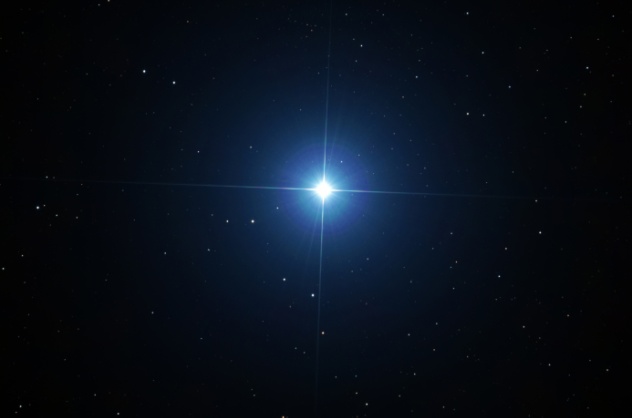
The standard Big Bang model says that after all matter exploded from a singularity, it blowed hot and dense Universe began to slowly cool down over billions of years. But this singularity creates a number of problems when its trying to cram in the General theory of relativity and quantum mechanics, so the cosmologist Krzysztof Wetterich from the University of Heidelberg has suggested that the universe could start from cold and a huge empty space, which becomes active only because shrinks rather than expands in accordance with the standard model.
In this model, the redshift observed by astronomers, can be caused by increasing the mass of the universe as compression. The light emitted by atoms, is determined by the mass of the particles, more energy is manifested as the movement of light in the blue part of the spectrum and less in the red.
The main problem of the theory Wetterich that it is impossible to confirm the measurements because we only compare ratios of different masses and not for the masses. One physicist complained that this model is akin to the assertion that the universe is not expanding, and the line, which we measure, is compressed. Wetterich said that he does not consider his theory replacing the Big Bang; he only noted that it is correlated with all known observations of the Universe and may be more “natural” explanation.
Circles Carter

Jim Carter — the Amateur scientist, developed a personal theory about the universe based on eternal hierarchy “zyklonb”, a hypothetical round mechanical objects. He believes that the entire history of the Universe can be explained as generation of tsiklonov, developing in the process of reproduction and division. This conclusion scientist came after seeing a perfect ring of bubbles coming out of his breathing apparatus when he was engaged in underwater diving in the 1970’s, and honed his theory by experiments involving controlled rings of smoke, garbage cans, and rubber sheets. Carter regarded them as a physical embodiment of the process called cyclona synchronicity.
He said that cyclona synchronicity represents the best explanation of the Universe than the Big Bang theory. His theory of a living universe postulates that at least one hydrogen atom has always existed. At the beginning of one atom of antihydrogen swam in the three-dimensional void. This particle had the same mass as the entire universe, and it consisted of a positively charged proton and the negatively charged antiproton. The universe was in complete perfect duality but negative antiproton gravitational expanded slightly faster than the positive proton, which led to the loss of its relative weight. They have grown toward each other until the negative particle overwhelming positive, and they formed the antineutron.
The antineutron was also unbalanced in weight, but eventually returned to equilibrium, which led to splitting it into two new neutron of particles and antiparticles. This process has caused exponential growth in the number of neutrons, some of which are not split, and annihilate into photons, which formed the basis of the cosmic rays. Eventually the universe became a mass of stable neutron that existed some time before the collapse, and allowed the electrons first combined with protons to form the first atoms of hydrogen and filling the universe with electrons and protons that interacts with the formation of new elements.
A little madness wouldn’t hurt. The majority of physicists believes the idea of Carter brad unbalanced, which is not even subject to empirical examination. Carter experiments with smoke rings was used as evidence of the now discredited theory of ether 13 years ago.
Plasma Universe

If the standard cosmology gravity remains the administering power, in plasma cosmology (electric universe theory) made a big bet on electromagnetism. One of the first proponents of this theory was Russian psychiatrist Immanuel Velikovsky, who wrote in 1946, entitled “Cosmos without gravity”, which stated that gravity is an electromagnetic phenomenon arising from the interaction between the atomic charges, free charges, and magnetic fields of the sun and planets. In the future, these theories have been worked out already in the 70-ies of Ralph Jurgens, who claimed that they worked on electrical, not thermonuclear processes.
There are many iterations of the theory, but the number of elements remains. The plasma universe theory argue that the Sun and stars are electrically feed on drift currents, some features of the planetary surface are caused by “sermonem” and that the tails of comets, Martian dust devils and the formation of galaxies — all of these electrical processes. According to this theory, deep space filled with giant filaments of electrons and ions, which are twisted due to the action of the electromagnetic forces in space and create physical matter like galaxies. Plasma cosmologists assume that the universe is infinite in size and age.
One of the most influential books on the subject was “the Big Bang never happened”, written by Eric Lerner in 1991. He claimed that the Big Bang theory correctly predicts the density of light elements like deuterium, lithium-7 and helium-4 that the voids between the galaxies are too large to be attributed to the time frame of the Big Bang theory, and that the surface brightness of distant galaxies is observed as a constant, whereas in the expanding universe the brightness should decrease with distance due to the red shift. He also claimed that the Big Bang theory requires too many hypothetical things (inflation, dark matter, dark energy) and violates the law of conservation of energy, since the universe is supposedly born out of nothing.
On the contrary, he says, the plasma theory correctly predicts the abundance of light elements, the macroscopic structure of the Universe and the absorption of radio waves, which is the cause of the cosmic microwave background. Many cosmologists argue that ternerovskie criticism of Big Bang cosmology is based on concepts that were considered wrong at the time of writing his book, and his explanation that the observations of cosmologists Big Bang bring more problems than it can solve.
Bindu wapshot

While we did not touch on religious or mythological stories of creation of the universe, but will make an exception for the Hindu stories of creation, because it can easily be linked with scientific theories. Carl Sagan once said that it is “the only religion in which time frame meet modern scientific cosmology. Her cycles are moving from our ordinary day and night to a day and night of Brahma, length 8,64 billion years. Longer than the Earth has existed or the Sun, almost half the time since the Big Bang”.
The closest to the traditional idea of the Big Bang of the universe is found in the Hindu concept of bindu vipcot (literally, “point explosion” in Sanskrit). The Vedic hymns of ancient India said that bindu wapshot produced sound waves of om, meaning Brahman, the Absolute Reality or God. The word “Brahman” is a Sanskrit root brh, meaning “great growth” that can be associated with the Big Bang, according to the Scriptures Shabda Brahman. The first sound “om” is interpreted as the vibration of the Big Bang, discovered by astronomers in the form of background radiation.
The Upanishads explain the Big Bang as the one (Brahman) who wishes to become many, what he had achieved at the expense of the big Bang as an effort of the will. The creation is often depicted as Leela, or “divine play”, in the sense that the universe was created as a part of the game, and run as a big Bang was part of it. But unless the game will be interesting, if it is omniscient player who knows how it will go?
According to the materials listverse.com
